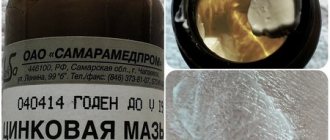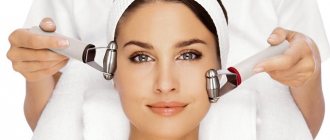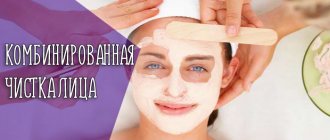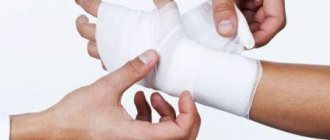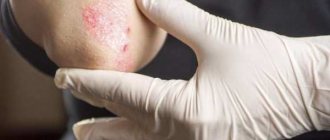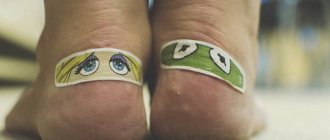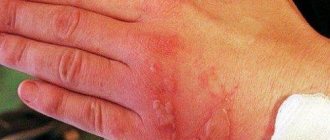A burn is a common injury that can occur at work or at home. Damage to the skin can be caused by various thermal (boiling water, steam, flame), chemical (alkalis, acids) and radiation (ionizing radiation, ultraviolet) agents. Regardless of the type of damaging agent, the burn is accompanied by severe pain and burning. You can relieve the pain from a burn using pharmacological or folk remedies. But it should be understood that, in addition to alleviating pain, it is important to provide first aid to the victim correctly and in a timely manner, especially with deep injuries.
Nature of pain
Depending on the depth of tissue damage, there are 4 degrees of burns.
- Damage to the surface epithelium. It is accompanied by a strong burning sensation, but heals quickly even without treatment.
- Damage to the epithelium and upper layer of the dermis while maintaining the integrity of nerve fibers and blood vessels. Causes piercing, burning pain and the appearance of small blisters.
- The spread of pathological processes to the deep layers of the dermis, blood vessels, partial damage to the fiber. Accompanied by a decrease in pain sensitivity in the damaged area and the formation of large blisters.
- Damage to deep layers of tissue, covering subcutaneous tissue, blood vessels, nerve endings, muscle fibers, and sometimes bones.
With mild burns, pain after injury may be more intense and prolonged than with severe injuries, since the nerve endings remain intact and continue to perform their functions. With 3rd and 4th degree burns, nerve fibers are destroyed. Therefore, at the moment of contact with a damaging agent, the victim experiences unbearable pain, and after injury, pain sensitivity decreases or completely disappears.
Useful tips
- If a burn occurs, cool the burn area with ice in a bag as soon as possible. Cold running water can cause a blister.
- Burns are the gateway to infection, so in case of severe damage, consult a doctor immediately.
- It is forbidden to lubricate the burn site with any oils (sour cream, vegetable oils); it is better to lubricate the skin with them when the regeneration processes begin.
- Anti-burn agents can be applied only after the wound has cooled and pain has decreased.
- Protect the burn with a bandage from contamination.
Take care of yourself and be healthy!
Video about a doctor’s truthful review of the drug Panthenol:
♦ Category: Medicines.
First aid
Timely and competent provision of first aid for a burn reduces the severity of the injury by one. To reduce the pain from a burn and alleviate the condition of the victim, you must:
- stop exposure to the damaging agent;
- rinse the burn site under cold water (the duration of the procedure depends on the type of damaging agent);
- trying not to damage the wound, cut off the clothing;
- cover the wound surface with a sterile bandage;
- give a pain reliever;
- wrap up and provide warm drinks (to reduce the manifestations of intoxication that occurs from burns);
- In case of extensive and/or deep damage, call an ambulance.
Ice is often used to cool the wound. But this is strictly prohibited, otherwise, in addition to thermal damage, tissue frostbite occurs. Also, you should not wash the wound surface if there is a deep burn, accompanied by the formation of an open wound. In this case, a cooling compress is applied to the burn site.
Oil burn
An oil burn is a severe thermal injury. The boiling point of oils reaches 200° C, in addition, they have a thick consistency and have high heat transfer. When it comes into contact with the skin, the oil forms a dense film, which retains a high temperature for a long time, prevents the access of air, and, accordingly, complicates natural cooling.
The most important thing for an oil burn is to cool the damaged area. To do this, keep the wound under cool water for at least 20 minutes. The water should not be too cold (temperature at least 15°C).
Burns from boiling water and steam
Burns from boiling water are the most common household injury. If the skin is damaged by hot liquid, first aid also boils down to cooling the skin. For 1-2 degree burns, the wound is washed with cold water for 5-10 minutes; for deep injuries, a cooling compress is applied to the wound surface for 15-20 minutes.
Intramuscular administration
Analgesics are most often administered intravenously or intramuscularly by doctors and only for deep skin lesions. The analgesic effect occurs within 20 minutes, since the active substances are immediately “delivered” to the site of injury. You can self-administer topical pain-relieving syringe tubes (for example, butorphanol), sold in pharmacies with a prescription.
There are several methods for numbing burned skin, each of which has its own advantages and disadvantages. The main thing is to quickly assess the extent of the damage and choose the most affordable option. In serious cases, it is better to play it safe and call an ambulance.
Painkillers for burns
For burns, both local painkillers (creams, ointments, aerosols, compresses with anesthetics) and systemic drugs (tablets, capsules, injection solutions) can be used.
Local preparations
Effective topical agents that help get rid of pain include the following:
- Panthenol. The drug based on dexpanthenol relieves pain, softens and moisturizes the skin, and accelerates healing. Available in the form of cream, ointment, aerosol. For burns, it is optimal to use Panthenol spray - it can be distributed over the surface of the burn without touching the damaged tissue with your hands, which avoids additional pain.
- Solcoseryl. The drug helps reduce pain and swelling and accelerates regeneration. Used for thermal and sunburns. Immediately after an injury, it is recommended to use Solcoseryl jelly, and at later stages of healing - ointment.
- Sulfargin. A product based on the sulfonamide component and silver ions quickly relieves pain, prevents wound infection, and accelerates healing. It is used for all types of burns, but for extensive injuries accompanied by painful shock, the use of the ointment is contraindicated.
- Bepanten Plus. A cream based on dexpanthenol and chlorhexidine has an analgesic, antiseptic and healing effect. For use only on superficial burns.
Activtex wipes
Another effective pain reliever for burns is sterile Activtex wipes impregnated with a special composition (lidocaine, chlorhexidine, sea buckthorn and eucalyptus oil, furagin, vitamins A and E). This is a modern dressing material, the use of which provides rapid pain relief, prevents the development of infectious complications, and promotes rapid healing.
Mode of application:
- moisten the material in physiological solution to form a gel-like polymer;
- apply a napkin to the damaged area;
- secure with a bandage.
Important! The dressing should always be moist, so it should be moistened with saline as needed. Otherwise, the polymer dries to the wound, which leads to tissue damage during dressings.
If there is no dressing material at hand, a compress with an anesthetic will help to numb the burn. Apply a sterile napkin sufficiently moistened with a solution of Lidocaine or Novocaine to the burn site.
Burn Spray External Analgesic
Aqueous Gel with analgesic is an anesthetic spray for burns from an American manufacturer, which works due to lidocaine in the composition. The water-based drug helps:
- toning the skin;
- disinfection of the epidermis;
- calming the dermis.
The product prevents the formation of blisters and quickly combats redness after a burn. It is recommended to be used for anti-burn treatment in the first week after the injury. Its daily use approximately three times a day minimizes symptoms resulting from improper handling of hot objects.
Advantages of the product:
- fast absorption;
- available form of release;
- reasonable price;
- analgesic effect;
- prevention of scars.
But the downside is that it is not always available for sale.
Traditional methods
You can relieve the pain of a burn using various folk remedies.
- Raw potatoes. Grind the pulp, place the pulp in a sterile bandage, and apply to the damaged area. The pain will be reduced due to the starch contained in potatoes.
- Dairy products. Kefir, yogurt, sour cream soothe the skin well and reduce pain. Especially often used for sunburn.
- Egg white. Applied to damaged skin immediately after injury, it eliminates burning sensation well.
- Aloe juice. Soak a bandage in the fresh juice of the plant and apply it to the damaged area. The product disinfects well, reduces inflammation, and promotes regeneration.
- Toothpaste. Used only for minor burns, unless there is an open wound. Mint, which is part of toothpastes, has a cooling and distracting effect, helping to get rid of pain from a mild burn.
Folk remedies can help with very mild skin damage. But they must be used with caution. Self-medication can lead to further tissue damage, wound infection and other serious complications.
Review of popular drugs for treatment
Many consumers, when purchasing medications for thermal injuries, do not know what to choose; the list of medications is quite wide; the most popular are:
- Rescuer is a good inexpensive balm (ointment) based on natural ingredients, intended for treating skin injuries. It can be used at any age for children and adults without contraindications; side effects are very rare.
- Panthenol is a universal remedy suitable for treating solar and thermal skin lesions. Has an anti-inflammatory effect, helps heal wounds and injuries.
- Bepanten - intended for treating all types of damage with boiling water, is an anti-inflammatory, antimicrobial agent.
- Olazol - the most effective spray relieves pain and stimulates regeneration processes. Designed for treating complex injuries with boiling water of 2-3 degrees, especially infected ones. Do not use for sun damaged skin, may cause allergies. Reviews from doctors and consumers about this drug are positive.
- Radevit - the components of the ointment help the skin regeneration processes, eliminate itching, reduce pain, it contains vitamins A, E and D so that the skin does not dry out and does not crack during healing. It has no contraindications, so it can be used by infants, pregnant women and nursing mothers.
The child has
Burns are especially dangerous for children. The physiological characteristics of a child’s body are such that even a moderately high temperature can cause tissue damage. In children, burns are much more severe than in adults and are often accompanied by the development of burn disease. Both the burns themselves and their consequences are dangerous - wet wounds that do not heal for a long time, infection of the burn surface, the formation of rough scars that become a serious cosmetic problem.
If a child is injured, it is necessary to urgently and correctly provide first aid to the child. Incorrect actions by parents can significantly complicate both diagnosis and further treatment.
After washing the damaged area, Panthenol aerosol (used from birth) or Olazol spray (pain relief, prevents infection, accelerates healing, used in the treatment of burns in children over 2 years old) will help to numb the child’s burn. If the pain is severe, you can give your baby a non-steroidal anti-inflammatory drug (Panadol syrup, Nurofen, Ibufen).
It is forbidden to treat damaged skin with fatty substances (oil, baby cream, fat-based ointments) - they create a thick, oily film on the surface of the skin that prevents the natural cooling of the tissues.
After providing first aid, you need to wait for the ambulance to arrive or take the child to the hospital. Children under one year old, with an injury area of more than 2% of the body surface, with burn injuries to the face, eyes, and upper respiratory tract, are treated for burns only in a hospital setting.
A burn is always accompanied by severe pain, burning, and redness of the skin. To alleviate the condition of the victim, you need to rinse the damaged area with cold water or apply a cool compress and give a pain reliever. The further prognosis largely depends on the timeliness and quality of first aid.
Various folk remedies can also help relieve burn pain at home. But it is important to understand that they can only be used in cases of mild damage, accompanied by redness and the appearance of small blisters. Severe deep and/or extensive injuries often occur with the development of painful shock, disruption of the heart, kidneys, and liver, and therefore require competent drug treatment in a hospital setting.
Side effects from the use of drugs Panthenol and Olazol
Panthenol spray has established itself as an effective remedy that is approved for use by women during lactation, expectant mothers and in case of dermatitis in children, which indicates its safety. The risk of an allergy to the components of the drug cannot be completely excluded. If you notice irritation, spots or rashes on your skin while using the spray, you should stop using it and consult your doctor.
Side effects of the drug Olazol are as follows:
- Digestive disorders;
- Exfoliation of the top layer of skin;
- Confusion;
- Decreased urine output;
- Convulsions;
- Allergic reactions (up to shock).
Long-term use of the product can lead to chronic poisoning of the body, so follow the doctor’s instructions or the information specified in the instructions.
How to numb an injured area
After receiving a thermal burn, the victim must be given a tablet of analgin, ketanol or another drug from the category of analgesics . As an alternative, for severe pain, you can take an ampoule of novocaine or lidocaine and pour the contents onto a piece of bandage. Apply a generously soaked bandage in the solution to the burned area.
Note! It is recommended to give painkilling injections only for thermal, electrical or chemical burns when unbearable pain occurs.
Cooling the burned area
Heat penetrates deep into the skin after a thermal burn. Cooling the burned area will reduce the depth of tissue damage - the cold will stop the spread of heat deep into the body. At home, you can use running tap water by placing the affected area under a cold stream of water . In outdoor conditions, use bottled water or apply soft ice for 20 minutes.
It is important! It is better to apply ice from the freezer wrapped in a thick towel. The cold should gradually cool the burned tissue.
Medicines and ointments
Ointments and pharmaceutical anti-burn products are intended for pain relief, protection against infection of open wounds, their healing, softening of the skin and drying of weeping blisters. The most effective medications:
- Panthenol . The most effective and affordable pharmaceutical remedy for reducing pain and preventing the formation of a bubble on the burned area in the form of a foam spray. Before use, shake the can thoroughly and apply the foam evenly to the affected area of the skin.
- Levomekol . Antibacterial ointment is recommended for use only after the blister bursts and a purulent open wound appears in its place. The components of the ointment penetrate deeply into the tissue and stimulate the regeneration process of the skin.
- Syntomycin ointment . It has antibacterial, anti-inflammatory, softening, healing and analgesic properties. Immediately after receiving a burn, apply a thin layer of the product. If the affected area is large, it is better to apply a bandage using a napkin generously lubricated with ointment.
- Solcoseryl . The Swiss drug is available in two versions: ointment and gel. They differ in their effect on skin cells. It is advisable to use gels in the first stages of treatment, when it is necessary to create a protective film on the wound, start the healing process and dry the discharged liquid. When the wound begins to heal and a new, thin, pink layer of epithelium appears in its place, you need to switch to Solcoseryl in ointment. Its use will help improve tissue nutrition and speed up the healing process.
- Bepanten . An effective remedy for burns of any origin: thermal, chemical or resulting from radiation. The main purpose is healing and scarring of shallow layers of burned tissue. Available in the form of lotion, gel and cream.
Folk remedies for pain relief
After the initial treatment, you can begin traditional methods of anesthetizing the burn site:
- Cut raw potatoes If the wound is more serious, grate the potatoes, spread the mixture on a soft cloth and make a compress;
- Whisk the egg white
- Aloe . Take the thickest leaf of the plant, cut it and apply it to the sore spot;
- Laundry soap is also a great way to reduce pain and disinfect the wound. Simply rub the affected area of the body with soapy water while washing.
